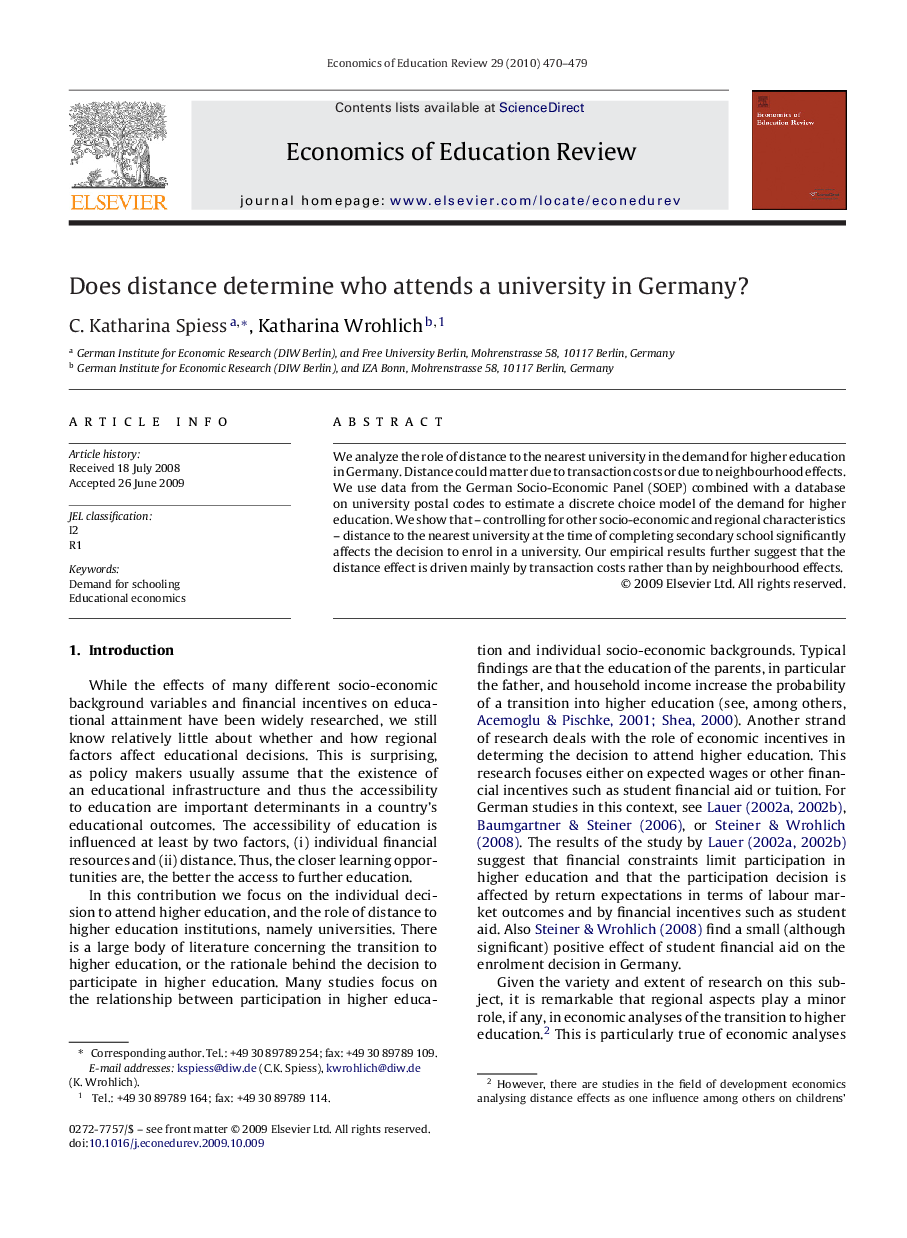| Article ID | Journal | Published Year | Pages | File Type |
|---|---|---|---|---|
| 354835 | Economics of Education Review | 2010 | 10 Pages |
Abstract
We analyze the role of distance to the nearest university in the demand for higher education in Germany. Distance could matter due to transaction costs or due to neighbourhood effects. We use data from the German Socio-Economic Panel (SOEP) combined with a database on university postal codes to estimate a discrete choice model of the demand for higher education. We show that – controlling for other socio-economic and regional characteristics – distance to the nearest university at the time of completing secondary school significantly affects the decision to enrol in a university. Our empirical results further suggest that the distance effect is driven mainly by transaction costs rather than by neighbourhood effects.
Keywords
Related Topics
Social Sciences and Humanities
Economics, Econometrics and Finance
Economics and Econometrics
Authors
C. Katharina Spiess, Katharina Wrohlich,
